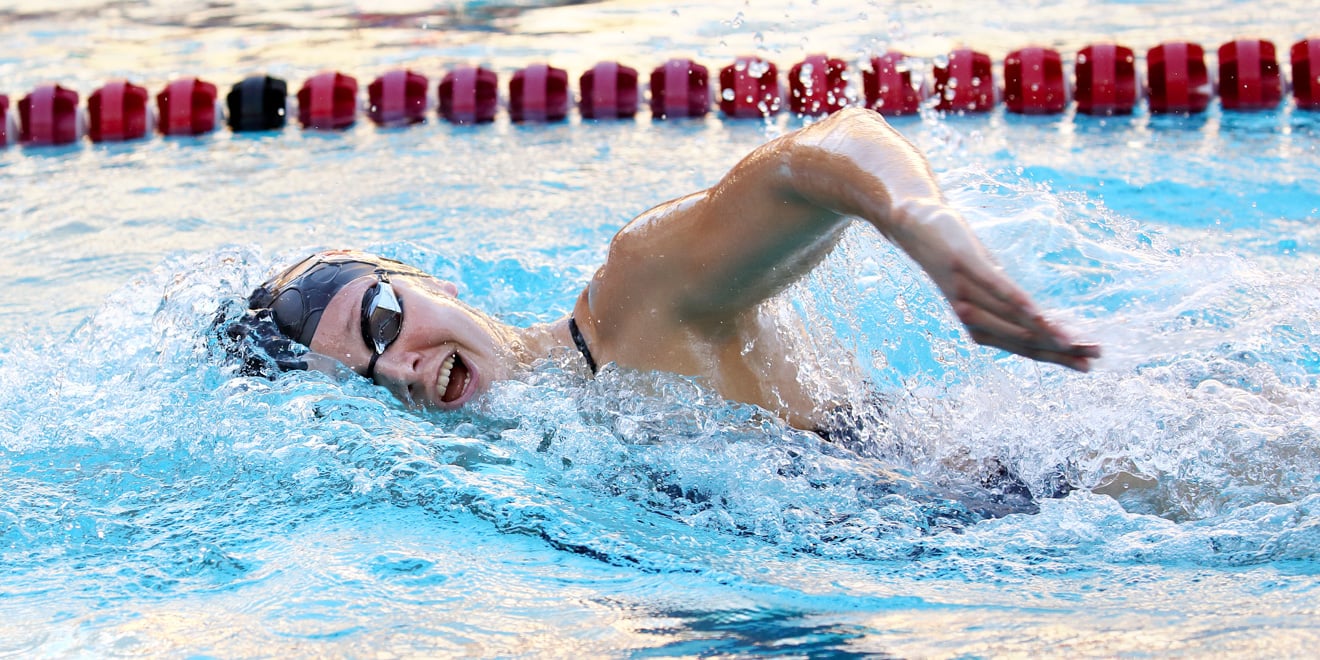This afternoon, the No. 2 Stanford women’s swimming and diving team (2-0, Pac-12 2-0) will host No. 1 Texas (3-0, Big-12 1-0) in Avery Aquatic Center, for the biggest meet of the NCAA women’s swimming season thus far.
Back in 2014, Texas pulled off a come-from-behind victory in the last event of the meet to hand Stanford its most recent home loss. The Cardinal and the Longhorns last dueled in 2016, when the eventual champions, the Cardinal, pulled out a 161-137 win. However, much has changed in those two years, and this clash of titans will be Stanford’s toughest meet thus far.
Stanford is coming off of a month-long break from their last meet, a decisive win over Washington State. The Cardinal have placed first in all 27 events that had an eligible swimmer this year, though it is unlikely that this streak will continue in the face of Texas’ equally dominant squad. All three of the Longhorns’ wins have come against top 20 teams, including two in the top 10.
Stanford’s main strength is their depth across all distances and strokes, as proven by their unbeaten event streak. The last two dual meets against Utah and Washington State gave the coaches an opportunity to push the team outside of their comfort zone, but due to the Longhorns’ comparable skill, this will likely be the first meet where swimmers will all compete in their best events.
Excluding the extreme outlier that was Katie Ledecky’s tenure with the team, junior Megan Byrnes and senior Leah Stevens have posted the fastest times on the team in the 1000-yard free for the past two years. At least one of the two should be racing today.
Senior Ella Eastin, junior Katie Drabot and sophomore Lauren Pitzer return with the fastest times in the middle-distance 500-yard free. This event is one of Stanford’s deepest, so any number of swimmers could be called upon to swim it.
In the quicker 200-yard free, Pitzer has the fastest time of the season, and she has the second fastest returning time from last year, beaten only by Drabot. Junior Erin Voss and freshman Morgan Tankersley both swam a competitive race against Pitzer during the Washington State meet, extending the depth chart.
The two most exciting individual events of the meet are the electric 50-yard free and 100-yard free. Pitzer and sophomore Lauren Green have the first and second fastest returning times, respectively, for both races. The freshman class is particularly well-equipped to handle these sprinting events. Taylor Ruck, Amalie Fackenthal, Lucie Nordmann and Anya Goeders all battled at a high level in the 50 free before coming to Stanford. Nordmann, Ruck, Tankersley and Goeders have also found success in the 100 free.
The Cardinal lost their four fastest 100-yard backstroke swimmers over the offseason, leaving only veterans Eastin, Voss and junior Allie Szekely. However, the new class has brought a few backstroke specialists such as Nordmann and Ruck. There is a strong chance that a combination of Voss, Eastin, Szekely and Ruck will appear in the 200-yard backstroke as well. Voss has already claimed a B qualifying time in this event.
The breaststroke events draw from a smaller pool of swimmers. Look for senior Kim Williams, sophomore Grace Zhao or freshman Zoe Bartel in the shorter 100-yard breast. For the 200-yard breaststroke, Bartel swam better than the B qualifying time in her first meet against Utah, making her the fastest of the season so far. Sophomore Brooke Forde, Williams and Zhao are Stanford’s fastest returning swimmers in the 200 breaststroke.
Similar to backstroke and breaststroke, butterfly has 100-yard and 200-yard variants. Assuming she races, Eastin, the American record holder in the 200 fly, is the clear favorite. Drabot and sophomore Hannah Kukurugya could join Eastin in that race. The 100 fly was another race that suffered from losses over the offseason, however freshman Amalie Fackenthal already achieved a B-cut time in this event against Utah. Eastin, Drabot and Green all qualified for the 100 fly last year as well.
The final two individual events are the 200-yard and 400-yard IMs. Eastin is the IM queen after breaking the American records for both events at NCAA’s last March. Forde is the second fastest returning swimmer in those races as well. Freshman Allie Raab performed very well in the 200 IM during the Utah meet, and Szekely broke the 400 IM B qualifying time in Pullman.
As far as the relays go, the members of the relay team are logically the fastest swimmers in the corresponding individual event (there are some exceptions to this). As a consequence, much of last year’s relay strength departed in the offseason, nonetheless it is clear that the freshmen are willing and able to fill the gaps between the veterans. This theme rings true to the team as a whole, and the Cardinal’s skill will be put to the test against the nation’s top-ranked Longhorns.
The first event will begin at 2 p.m. PST in the Avery Aquatics Center.
Contact James Hemker at jahemker ‘at’ stanford.edu.
